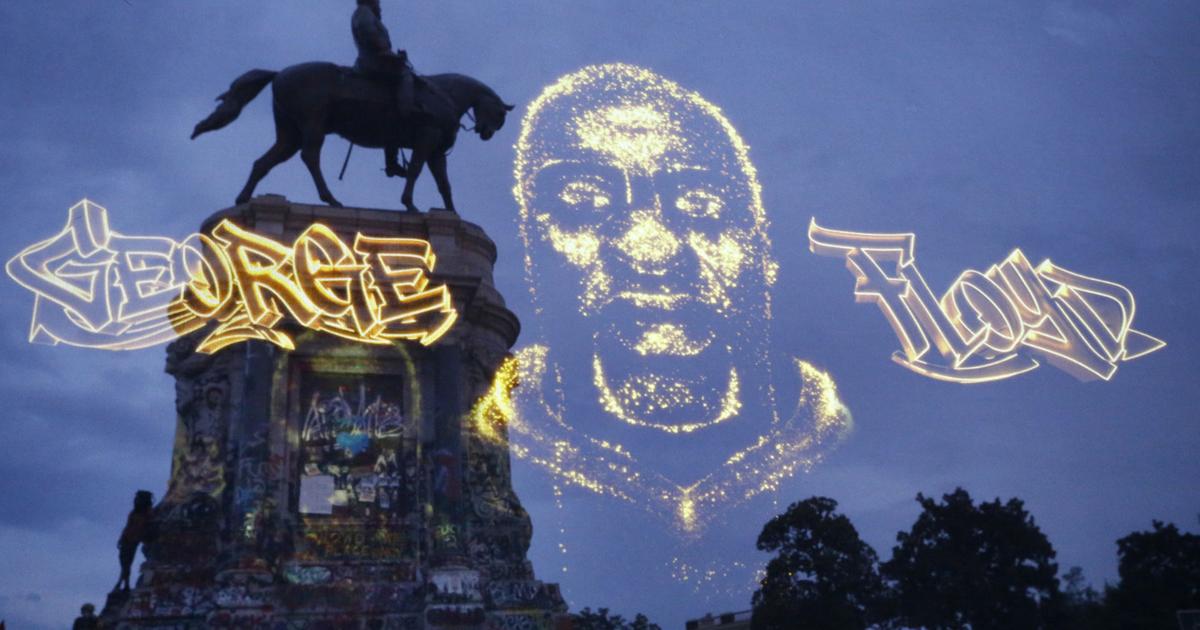
Before the Pulse bus burned, before BLACK LIVES MATTER graced storefront windows, and before the monuments tumbled, Richmond gave hints that it was awakening from a slumber.
Our city was tugging to unravel its defining narrative as the former capital of the Confederacy even before life seeped out of George Floyd beneath the knee of a Minneapolis police officer.
That ongoing transformation was most vivid on what would become known as Arthur Ashe Boulevard. A new statue outside the Virginia Museum of Fine Arts, by artist Kehinde Wiley, drew inspiration from the J.E.B. Stuart statue on Monument Avenue — even as it turned Confederate iconography on its head by replacing the white cavalryman with a contemporary Black man wearing Nikes, upswept locs and a hoodie.
People are also reading…
Still, I never envisioned Richmond’s simmering consciousness combusting the way it did the weekend after Floyd’s murder. The prophesy that inspired the title of Wiley’s statue seemed prescient as the headquarters of the Daughters of the Confederacy was torched and scorched next door.
One protester’s sign at the Robert E. Lee monument expressed the mood of the moment: “RUMORS OF WAR WASN’T A RUMOR.”
And just like that, a volcano many assumed to be dormant erupted into a late spring and summer of nightly protests and face-offs between demonstrators and police. Monument Avenue, long a symbol of Lost Cause intransigence, became a spotlighted stage in the fight for social change.
The image of George Floyd projected across the Lee monument became iconic, featured on the cover of National Geographic. The New York Times Style Magazine designated the reclaimed Lee monument space as one of the “Most Influential Works of American Protest Art Since World War II.” Richmond projectionists Dustin Klein and Alex Criqui also used the monument as a backdrop for Breonna Taylor, Malcolm X, Harriet Tubman and Marcus-David Peters, shot to death by a Richmond police officer in 2018 during a mental health crisis along an interstate highway.
Lee Circle was informally renamed in memory of Peters, with a basketball court, a vegetable garden and a memorial to victims of police violence nationwide. But it was also the site where Richmond police tear-gassed peaceful protesters, leading throngs of demonstrators to City Hall, where some demanded the resignation of Mayor Levar Stoney.
It was a moment both exhilarating and terrifying as we attempted to weather the twin assaults of a deadly virus and deadly systemic racism. If any city was less likely than Richmond to become an epicenter of the movement, it was Portland, Ore., one of the whitest cities in America. But white allies, in Portland, Richmond and beyond, packed the streets, demanding change. But the only thing as certain as change is the backlash to it.
Ralph Northam, a governor whose term began with a blackface scandal, would become the governor who removed the Lee monument — as unlikely a bookend as you’ll see in politics. But in Virginia, under Gov. Glenn Youngkin, that moment of racial reckoning has morphed into a moment in which teachers are being intimidated into avoiding hard lessons about racism in the classroom.
We are still very much a work in progress and regress.
Virginia abolished the death penalty. Richmond, and the Commonwealth, removed Confederate monuments. Monument Avenue, developed as a whites-only boulevard with grandiose statues, now projects the uncertain humility that comes before reinvention.
Violent crime continues to plague our most vulnerable communities, and too many children. COVID-19 has exacted a disproportionate toll. The disparities that chip away at Black life still live. Public housing residents are threatened with eviction; Richmond police, meanwhile, got pay raises of at least 10%.
“Defund the Police” was rejected in the polls in Minneapolis, the city where police abuse launched a movement. A Black retired police captain is mayor of New York. A white supremacist with an AR-15 style rifle is charged with killing 10 Black people in a Buffalo, N.Y., grocery store. We continue to wonder why armed, mass-murdering white supremacists can be arrested unscathed while the unarmed Floyd was effectively tortured to death over an allegedly counterfeit $20 bill. The problem, from that perspective, looks less like “more training” than selective de-escalation.
For race-baiting politicians, CRT is the new BLM; “wokeness,” the new “political correctness”; anti-racism, the new racism. Teaching about systemic racism in Virginia is muzzled by a prohibition of “inherently divisive concepts.”
The notion of a pluralistic society — expressed in the traditional U.S. motto as e pluribus unum, or “out of many, one” — is undermined by the mainstreaming of The Great Replacement, a theory once reserved for ardent white supremacists.
Our Memorial Day holiday is rooted in the aftermath of a Civil War over two competing visions of America. Today, we must decide whether we want a pluralistic and democratic nation, or one grounded in white supremacy and autocracy.
At stake is not just Black life, but the life of America.
"lasting" - Google News
May 28, 2022 at 09:51PM
https://ift.tt/5fqO62r
Williams: 2 years later, George Floyd's lasting impact on Richmond - Richmond Times-Dispatch
"lasting" - Google News
https://ift.tt/7fVTxpm
Shoes Man Tutorial
Pos News Update
Meme Update
Korean Entertainment News
Japan News Update
Bagikan Berita Ini














0 Response to "Williams: 2 years later, George Floyd's lasting impact on Richmond - Richmond Times-Dispatch"
Post a Comment